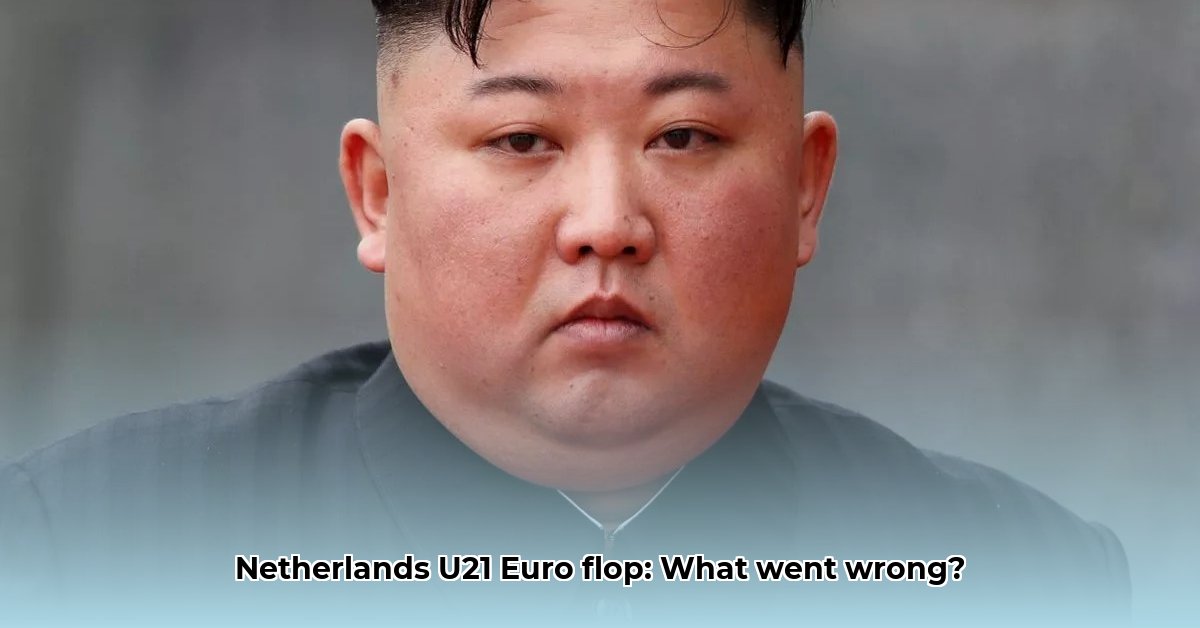
Jong Oranje's Euro U21 Stumble: A Tactical and Instructional Analysis
The recent Euro U21 Championship hasn't been kind to Jong Oranje. Their performances, particularly against Denmark and Finland, have left many questioning their readiness for top-level competition. This isn't simply about bad luck; deeper, systemic issues need addressing. This analysis will dissect the tactical flaws, individual performances, and offer actionable recommendations for improvement, providing a roadmap for Jong Oranje's resurgence.
A Midfield Muddle and a Finishing Fiasco: Key Tactical Weaknesses
Jong Oranje's struggles stem from two core areas: a malfunctioning midfield and a shocking lack of clinical finishing. The midfield, instead of dictating play, often looked disjointed, hindering the team's rhythm and starving the forwards of service. This midfield malaise was evident in numerous misplaced passes and hesitant decision-making. Meanwhile, the forwards' finishing was abysmal, with numerous gilt-edged opportunities spurned. This wasn't just about bad luck; it suggests a deeper problem with composure and execution under pressure. The combination crippled their attacking threat.
Pinpointing the Weak Points: A Tactical Autopsy
To effectively address the shortcomings, we need a detailed breakdown:
Tactical Instability: Constant formation changes created uncertainty and disrupted the team's flow. Players need time to adapt to a system; constant shifting undermines their ability to function as a cohesive unit.
Scoring Woes: The lack of clinical finishing is undeniable. While chances were created, converting them proved a significant challenge. This points to a need for targeted training in finishing under pressure, improving composure and decision-making in the final third.
Midfield Inertia: The midfield's failure to control the tempo and provide creative service severely hampered the attack. Improving passing accuracy, movement off the ball, and creative playmaking are crucial for unlocking the team's potential.
Defensive Fragility: While not the sole source of their problems, the midfield's inability to control possession left the defence vulnerable, leading to more defensive pressure and conceded chances.
The challenges facing Jong Oranje require more than superficial adjustments; a complete tactical rethink is needed.
Charting a Course to Redemption: A Step-by-Step Plan
Jong Oranje's revival hinges on these key steps:
Tactical Stability: Adopt a consistent formation and playing style. This fosters familiarity and understanding, boosting confidence and allowing players to develop a cohesive team dynamic.
Sharpen the Finishing: Implement dedicated finishing drills focusing on technique, composure, and mental resilience under pressure. This isn't just about physical skill; it's about developing mental fortitude. Simulate match-pressure scenarios to enhance decision-making in crucial moments.
Midfield Reinvention: Focus on improving midfield cohesion, passing accuracy, and creative playmaking. This could involve tactical adjustments, positional changes, or even bringing in players with proven skill in these areas.
Individualised Development: Conduct a thorough analysis of each player's strengths and weaknesses. Develop individual training plans to address shortcomings and nurture talent.
Mental Fortitude: Incorporate sports psychology techniques to build resilience and manage pressure. This aspect is often overlooked but is critical for success at the highest levels.
These aren't quick fixes; they demand time and dedication. But by adopting a systematic approach, Jong Oranje can build a stronger, more competitive team.
A New Dawn?
The Euro U-21 tournament served as a harsh lesson, highlighting areas for improvement. However, it's also an opportunity for growth. Jong Oranje possesses talent; what’s needed now is a strategic refocus and a commitment to consistent improvement. With the right approach, the future holds immense potential.